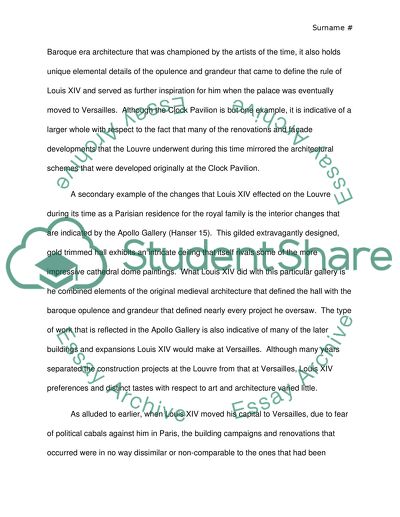How does King Louis XIV's history reflect the louvre Research Paper. Retrieved from https://studentshare.org/history/1459123-how-does-king-louis-xiv-s-history-reflect-the
How Does King Louis XIV'S History Reflect the Louvre Research Paper. https://studentshare.org/history/1459123-how-does-king-louis-xiv-s-history-reflect-the.


